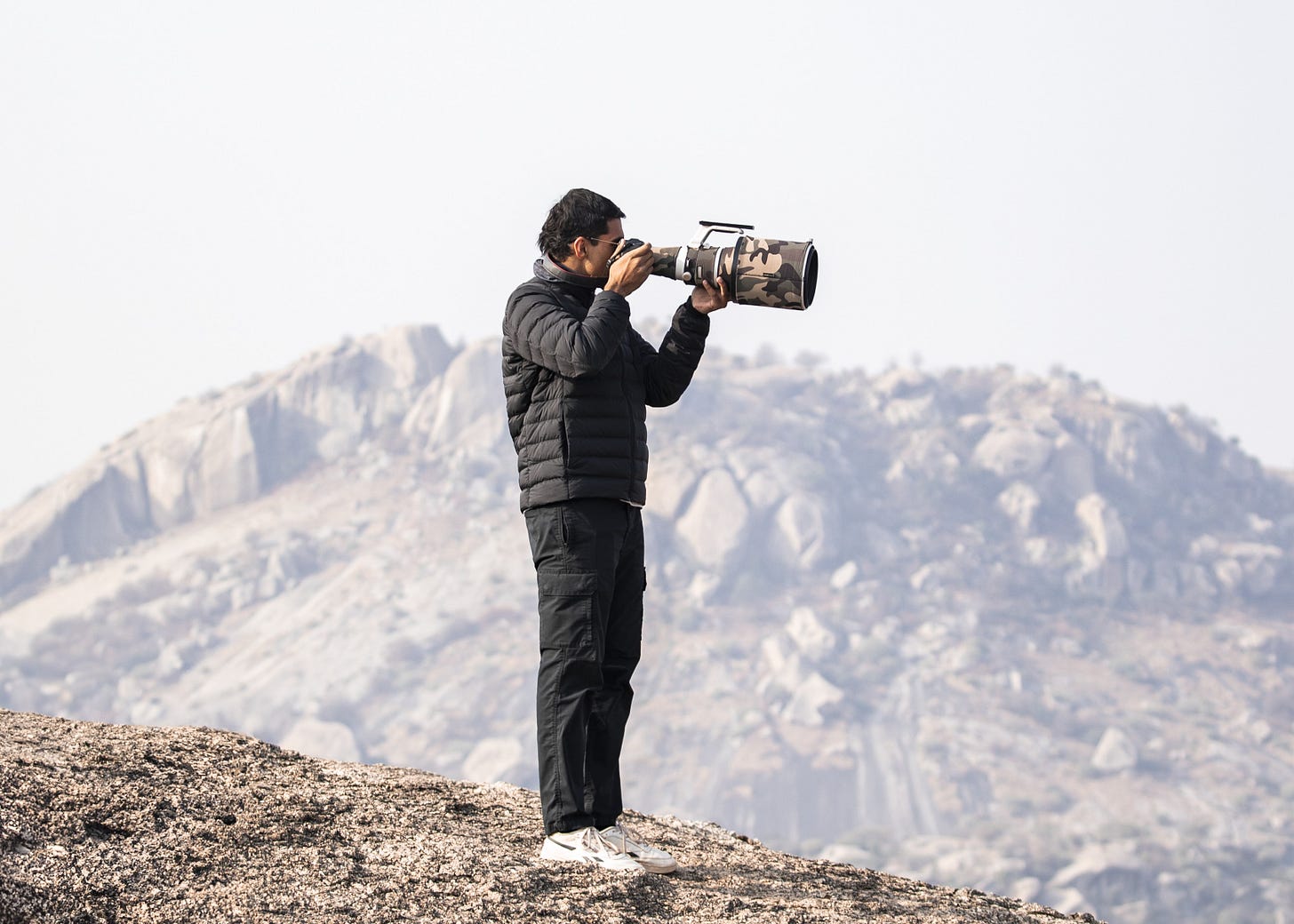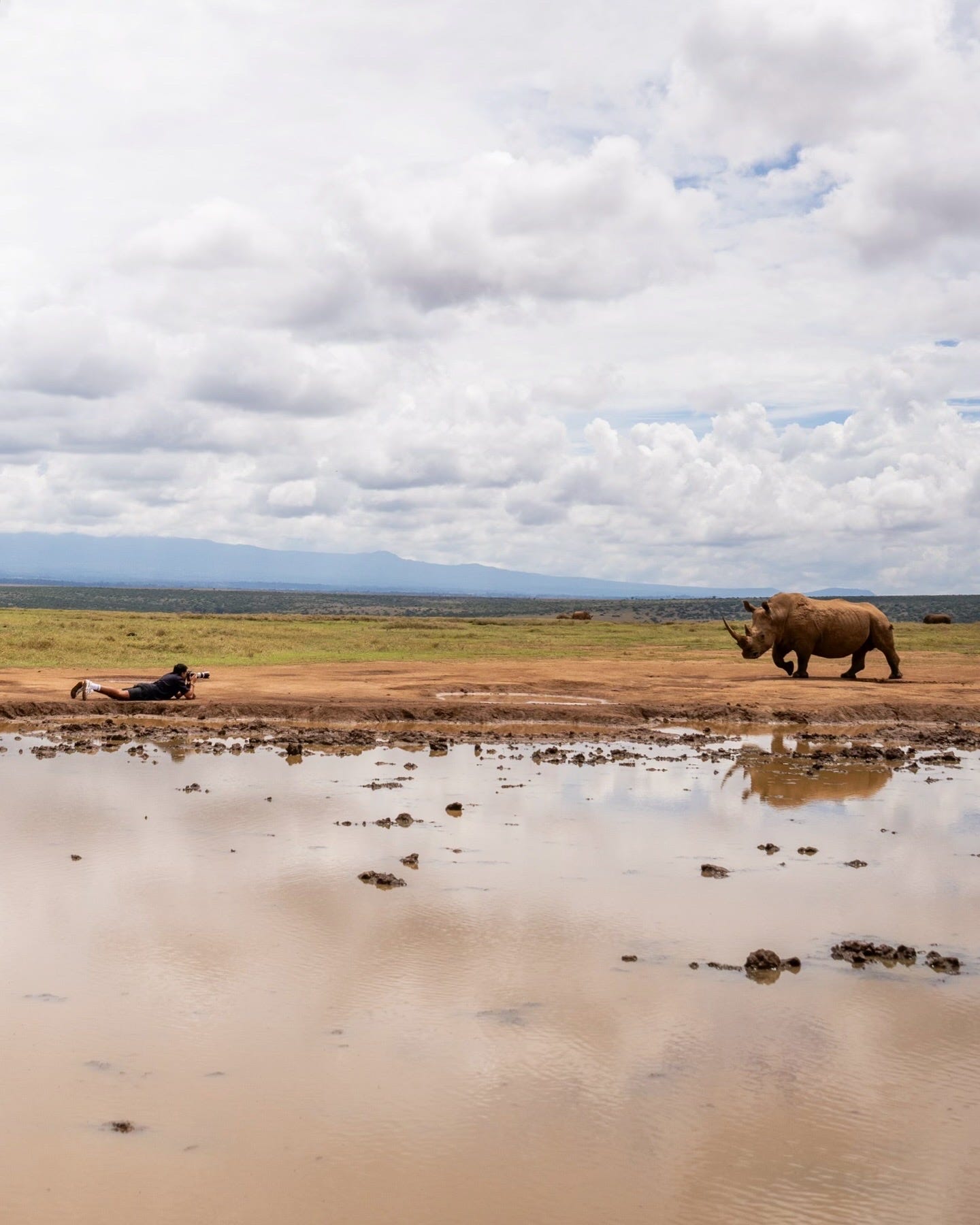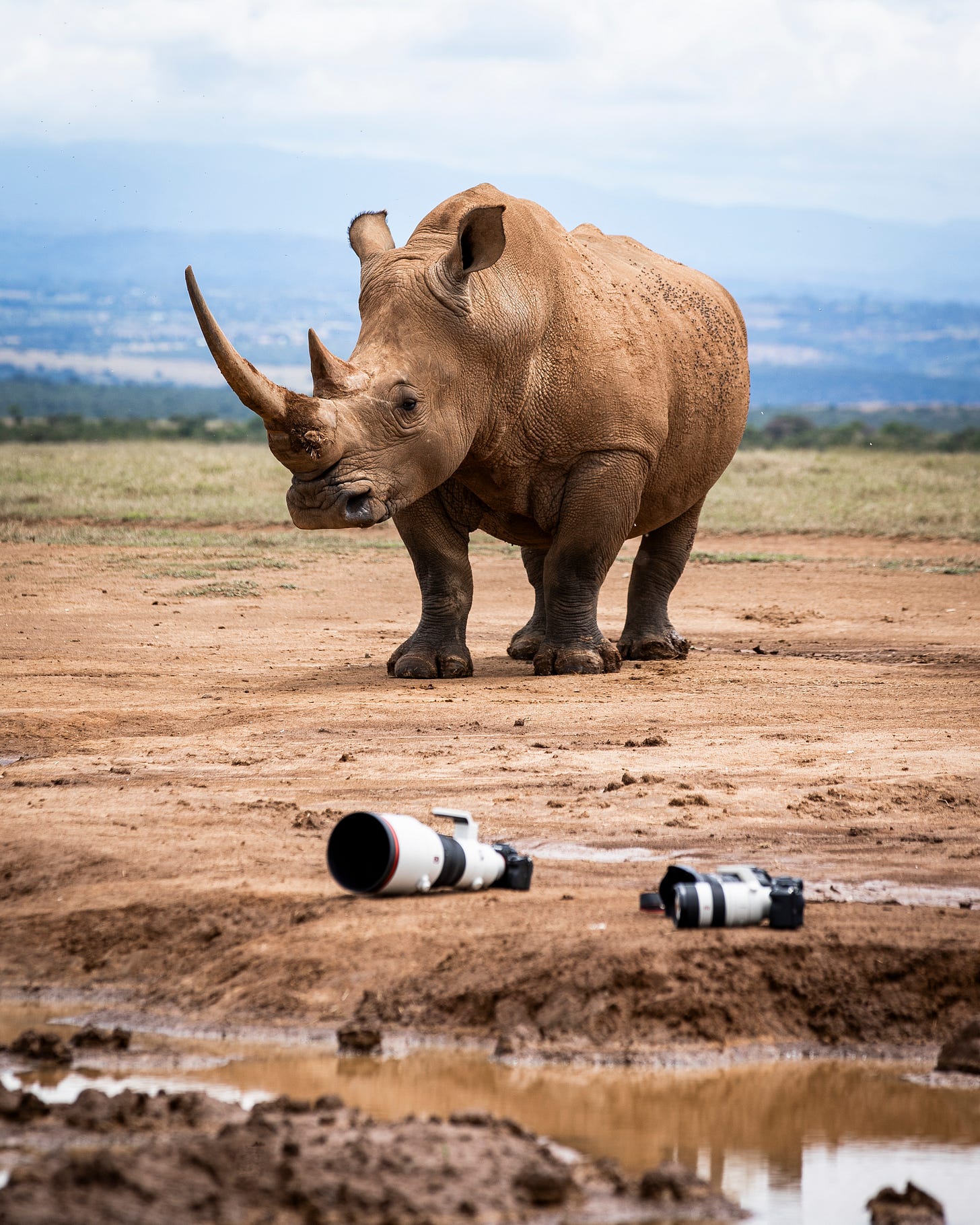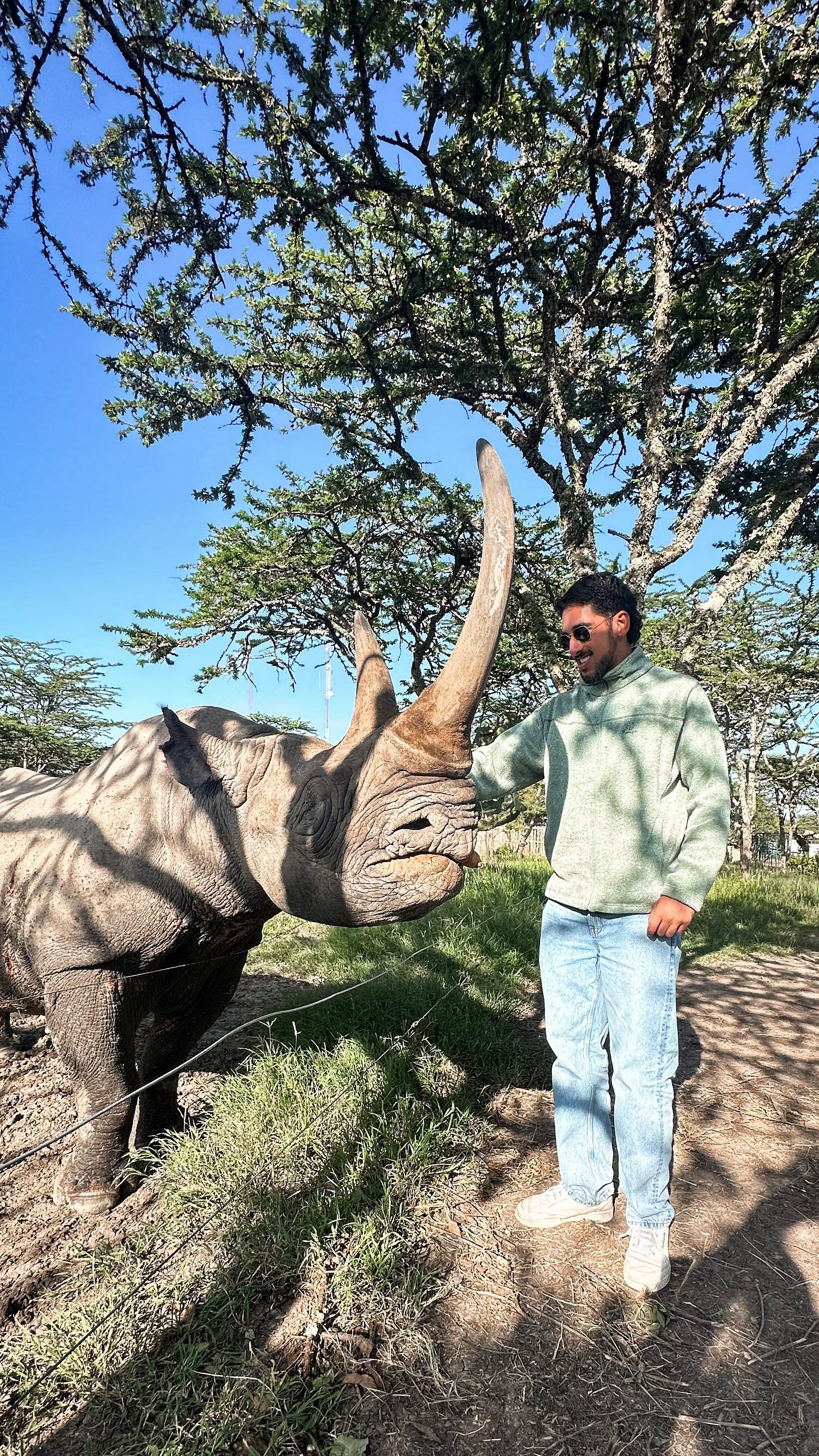Altars & Artists: Harman Singh Heer
Interview 08: Remote photographic safaris, witnessing vs documenting, and eternalising East Africa's wildlife through art
Welcome to Altars & Artists, a monthly interview series divining the poetry of artists' spaces. Inspired by Gaston Bachelard’s book "The Poetics of Space" and Virginia Woolf’s extended essay "A Room of One’s Own", Altars & Artists delves into the creative spaces of contemporary artists to reveal the intimate worlds they operate within.
If you enjoy this series, please consider becoming a paid subscriber—doing so unlocks an extended cut of each interview, including a prompt made especially for you by the guest. Your contribution also keeps Ruminations running & this writer at her desk ❧
New to this series? Be sure to check out the intro post below:
Please welcome our February Altars & Artists guest: Harman Singh Heer
Harman Singh Heer is a wildlife and nature photographer whose work has been featured in National Geographic, Discovery and BBC, and has received international recognition from the Smithsonian Museum of Natural History and Australian Photographer of the Year. Growing up in Kenya, Harman was immersed in the country’s beautiful national parks from a young age where he discovered his lifelong passion for wildlife and photography. He utilises Instagram as a platform to share his photographs, coupled with lyrical and poetic captions, to an audience of over 130,000.
At a more professional level, Harman works in the safari industry, tailor-making safaris for people across the world and privately guiding clients on photographic safaris. Through this, his goal is to make people’s safari dreams come true while also ensuring that their travels contribute to the preservation of Africa’s incredible ecosystems. Harman is additionally pursuing an MA in professional writing and publishing and holds a BA in economics and international relations. His deep connection with Africa’s wildlife is reflected in his vision to combine these growing skills in photography and writing to advocate for the plight of vulnerable wildlife and their vanishing habitats, particularly in the current global zeitgeist of environmental angst and uncertainty.
WEBSITE (SAFARIS) | INSTAGRAM | BEST WORK
Questions & Curiosities
Welcome to Ruminations Harman! Thank you so much for joining us. Can you begin by telling us a bit about yourself?
Thank you very much for having me, Caitlin. It is both an honour and pleasure to be included in this beautiful series which sheds light on the intimate, creative spaces of some incredibly talented artists. Here is a little about me: I am a photographer specialising primarily in wildlife photography and conservation in East Africa. Though I am currently based in Perth and study an MA in professional writing and publishing, I travel back to Africa every few months to lead photographic safaris, diversify my body of work, and reconnect with a natural space that is very close to my heart.
What initially inspired you to pick up a camera? How did your relationship with photography evolve from that moment on?
Photography was honestly never something I anticipated enjoying as a kid. But growing up in Kenya exposed me to wildlife and nature from a very young age. My mum and dad would take my sister and me on safari every couple of months, and it was only a matter of time until I picked up my mum’s old Canon 450D DSLR camera 13 years ago, deciding I was to be the “photographer” of the safari. Since that day, I have never been on a safari without my camera.
At first, photography simply became a means to document the wildlife moments I was witnessing, but in more recent years, it has transformed into a way for me to capture fleeting moments and make them eternal. Many of the big cats I grew up watching and photographing over the years are no more, and all I have left of them are the photographs and stories. These big cats that have shaped much of my life now only exist through photographs, standing the test of time.
How do you approach entering wild, natural areas as places to work from and with? Does your approach change depending on the location, animals, or the nature of the trip?
I always approach entering wild, natural places with an open mind and heart, and my process remains the same whether I am on a personal safari or guiding clients. I am a firm believer that it is so important to allow nature to give you what it intends to, rather than forcing things into place. This is particularly because I have found that when you chase particular moments or animals to photograph, you rarely find what you are searching for. In this sense, you are never fully satisfied and you end up missing out on the smaller, equally important, moments.
“I am a firm believer that it is so important to allow nature to give you what it intends to, rather than forcing things into place.”
You work at the very intersection between the natural world and modern technology, blending into remote locations one minute, and sharing your intricately edited images to social media the next. Do you ever experience tension between these two manifestations of your creativity, or do they feel like a natural pairing to you?
The intersection between the natural world and modern technology has always felt like a natural pairing to me. I photograph in a raw, unprocessed format, which by default is never a realistic interpretation of what my eyes see in real life. The photographs that come straight from the camera to my computer screen feel detached, almost. So, my primary aim when editing is to bring the photo back to what I remember seeing in person. Often enough, this gets distorted, particularly because the way you see something in the moment is very different to how you remember seeing that same thing after the fact. However, I think this is the beautiful thing about photography in the contemporary day—it is a glimpse into the world through my eyes and my eyes alone, portraying not exactly what I saw in real-time, but perhaps what I think I saw.
Part of what I feel makes your work so striking is its honesty. As a viewer, your photos often feel unframed—I cannot imagine a camera and lens between myself and, say, the lioness on my screen. I feel as though I’ve been placed directly into your shoes. Can you tell when you have captured “the one”, or does the final shot reveal itself to you during the editing process?
Thank you, that is exactly how I want people to feel when they see my work, so it means the world to me to know that is how my photographs make you feel. Interestingly, I can almost always tell when I have captured “the one”. This is primarily because I often have some ideas of potential photographs envisioned at the back of my mind, so when one of them finally manifests I instantly know that it is “the one”. Sometimes this process can take years, while other times I will see something I would have never even envisioned but I capture the shot and know then and there that it is something special.
Can you share where the magic happens, your ‘altars’ so to speak?
All the magic happens in nature. The photographs are captured in the wildest, remotest places and the editing and photo selection happen in these same places, but late at night, when you know you need to get in at least 5 hours of sleep but your eyes can’t stop staring at the screen in awe of what you just witnessed during the day. My best work is selected and edited in the field because it is then and there that it feels the most real.
What do you find most challenging about working on location?
What I find most challenging about working on location is definitely the long hours and lack of sleep. We are always up before dawn and out of camp before sunrise. We generally stay out until 11 am or 12 pm before returning to camp for lunch. We then depart again at about 3 pm and return by 7 pm.
However, there have been many days where we end up skipping lunch because we have found a big cat (usually a leopard) in the late hours of the morning and decide to sit it out until the evening’s golden hour. On top of this comes all the downloading and sorting through photographs and catching up on work and emails. By the time we get to sleep, it is probably 11 pm at the earliest, which means we barely get 6 hours each night.
And the most rewarding?
Without a doubt, the most rewarding moments are when your patience finally pays off. Like when you wait 12 hours at the base of a tree for a leopardess to descend, not knowing if she even will, but then she does in the most beautiful light at dusk. Or when you have spent days searching for a leopard in one of Kenya’s most remote places and you find one on the last drive. Moments like these make all the long days and lack of sleep worthwhile.
How do you foster a relationship between photographers and the environment on safari? Or, what do you consistently find yourself teaching people on safari?
I think that when my clients or just anyone, in general, see the immense love and appreciation I have for a place and its wildlife that I experience on such a consistent basis, a relationship is built almost immediately for them. It’s contagious. For instance, I explode with energy and excitement whenever we see a leopard (my favourite cat if I hadn’t already made it obvious), even though I have seen more leopards in my life than I can count. I think that this is what makes people fall in love with Africa and safari — being alongside other like-minded people and watching each other take in the pure joy of experiencing it.
If you’re enjoying this deep dive into Harman’s creative world, please consider sharing/restacking! Doing so helps Altars & Artists reach new readers and ensures I can feature new artists monthly. I love bringing you these interviews and can’t wait to hear your thoughts <3
Your work is both appreciation and protest. You have an incredible talent for capturing the natural world and using it to advocate for wildlife preservation. Tell us a little more about your passion for conservation and addressing environmental uncertainty.
Thank you for the kind words Caitlin. My passion for conservation and addressing environmental uncertainty stems from the environmental and biodiversity degradation I have witnessed first-hand. I have seen animals disappear at the hands of human-wildlife conflict. I have seen human encroachment into wild spaces. I have seen hundreds of animal bodies scattered across the savannah plains because of climate-induced drought.
The ultimate goal of my photography is to advocate for the environment by creating an emotional connection between the viewer and the subject of the photograph. This is why a lot of my work focuses on intimate, surreal portraits of wildlife. I want to show the world how incredibly beautiful the earth’s wildlife is, and how important it is we protect the last remaining wild places.
A note for free subscribers
To continue reading Harman’s interview and unlock his creative prompt, please consider becoming a paid subscriber. Doing so gives me the time to find and interview other inspiring guests for Altars & Artists! Can’t afford a paid subscription right now? You can earn complimentary subscriptions by sharing posts—you’ll be credited for any new subscribers to Ruminations <3
Keep reading with a 7-day free trial
Subscribe to Ruminations to keep reading this post and get 7 days of free access to the full post archives.

















